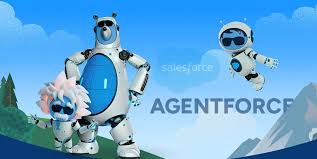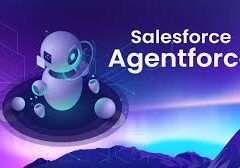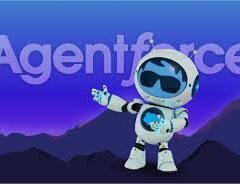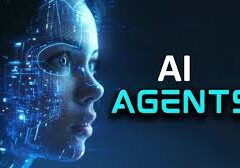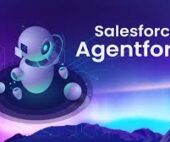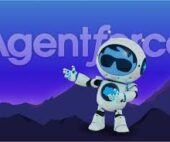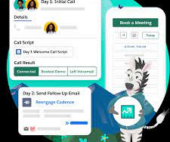The Rise of Agentforce: How AI Agents Are Shaping the Future of Work
Salesforce wrapped up its annual Dreamforce conference this September, leaving attendees with more than just memories of John Mulaney’s quips. As the swarms of Waymos ferried participants across a cleaner-than-usual San Francisco, it became clear that AI-powered agents—dubbed Agentforce—are poised to transform the workplace. These agents, controlled within Salesforce’s ecosystem, could significantly change how work is done and how customer experiences are delivered.
Dreamforce has always been known for its bold predictions about the future, but this year’s vision of AI-based agents felt particularly compelling. These agents represent the next frontier in workplace automation, but as exciting as this future is, some important questions remain.
Reality Check on the Agentforce Vision
During his keynote, Salesforce CEO Marc Benioff raised an interesting point: “Why would our agents be so low-hallucinogenic?” While the agents have access to vast amounts of data, workflows, and services, they currently function best within Salesforce’s own environment. Benioff even made the claim that Salesforce pioneered prompt engineering—a statement that, for some, might have evoked a scene from Austin Powers, with Dr. Evil humorously taking credit for inventing the question mark.
But can Salesforce fully realize its vision for Agentforce? If they succeed, it could be transformative for how work gets done. However, as with many AI-driven innovations, the real question lies in interoperability.
The Open vs. Closed Debate
As powerful as Salesforce’s ecosystem is, not all business data and workflows live within it. If the future of work involves a network of AI agents working together, how far can a closed ecosystem like Salesforce’s really go? Apple, Microsoft, Amazon, and other tech giants also have their sights set on AI-driven agents, and the race is on to own this massive opportunity.
As we’ve seen in previous waves of technology, this raises familiar debates about open versus closed systems. Without a standard for agents to work together across platforms, businesses could find themselves limited. Closed ecosystems may help solve some problems, but to unlock the full potential of AI agents, they must be able to operate seamlessly across different platforms and boundaries.
Looking to the Open Web for Inspiration
The solution may lie in the same principles that guide the open web. Just as mobile apps often require a web view to enable an array of outcomes, the same might be necessary in the multi-agent landscape. Tools like Slack’s Block Kit framework allow for simple agent interactions, but they aren’t enough for more complex use cases. Take Clockwise Prism, for example—a sophisticated scheduling agent designed to find meeting times when there’s no obvious availability. When integrated with other agents to secure that critical meeting, businesses will need a flexible interface to explore multiple scheduling options. A web view for agents could be the key.
The Need for an Open Multi-Agent Standard
Benioff repeatedly stressed that businesses don’t want “DIY agents.” Enterprises seek controlled, repeatable workflows that deliver consistent value—but they also don’t want to be siloed. This is why the future requires an open standard for agents to collaborate across ecosystems and platforms.
Imagine initiating a set of work agents from within an Atlassian Jira ticket that’s connected to a Salesforce customer case—or vice versa. For agents to seamlessly interact regardless of the system they originate from, a standard is needed. This would allow businesses to deploy agents in a way that’s consistent, integrated, and scalable.
User Experience and Human-in-the-Loop: Crucial Elements for AI Agents
A significant insight from the integration of LangChain with Assistant-UI highlighted a crucial factor: user experience (UX). Whether it’s streaming, generative interfaces, or human-in-the-loop functionality, the UX of AI agents is critical. While agents need to respond quickly and efficiently, businesses must have the ability to involve humans in decision-making when necessary.
This principle of human-in-the-loop is key to the agent’s scheduling process. While automation is the goal, involving the user at crucial points—such as confirming scheduling options—ensures that the agent remains reliable and adaptable. Any future standard must prioritize this capability, allowing for user involvement where necessary, while also enabling full automation when confidence levels are high.
Generative or Native UI?
The discussion about user interfaces for agents often leads to a debate between generative UI and native UI. The latter may be the better approach. A native UI, controlled by the responding service or agent, ensures the interface is tailored to the context and specifics of the agent’s task. Whether this UI is rendered using AI or not is an implementation detail that can vary depending on the service. What matters is that the UI feels native to the agent’s task, making the user experience seamless and intuitive.
What’s Next? The Push for an Open Multi-Agent Future
As we look ahead to the multi-agent future, the need for an open standard is more pressing than ever. At Clockwise, we’ve drafted something we’re calling the Open Multi-Agent Protocol (OMAP), which we hope will foster collaboration and innovation in this space. The future of work is rapidly approaching, where new roles—like Agent Orchestrators—will emerge, enabling people to leverage AI agents in unprecedented ways.
While Salesforce’s vision for Agentforce is ambitious, the key to unlocking its full potential lies in creating a standard that allows agents to work together, across platforms, and beyond the boundaries of closed ecosystems. With the right approach, we can create a future where AI agents transform work in ways we’re only beginning to imagine.
🔔🔔 Follow us on LinkedIn 🔔🔔

